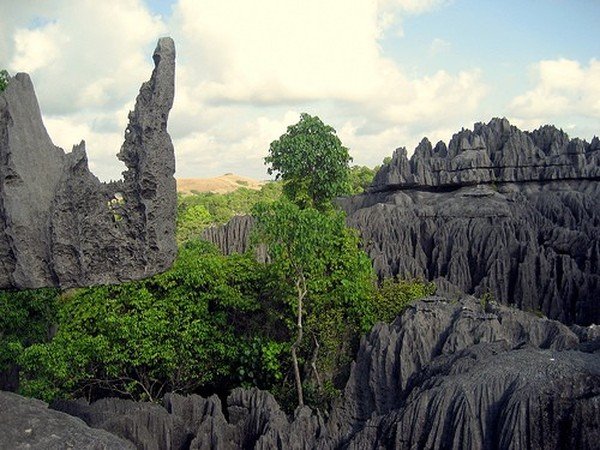|
|
Stone Forest In Madagascar, Manambulu - Bemaraha
|
The biodiversity of fauna in Madagascar extends beyond prosimians to the wider animal population. A number of other mammals, including the cat-like fossa, are endemic to Madagascar. Over 300 species of bird have been recorded on the island, of which over 60% (including four families and 42 genera) are endemic. The few families and genera of reptile that have reached Madagascar have diversified into more than 260 species, with over 90% of these being endemic (including one endemic family). The island is home to two-thirds of the world's chameleon species, and researchers have proposed that Madagascar may represent the origin of all chameleon species. Endemic fishes on Madagascar include two families, 14 genera and over 100 species primarily inhabiting the island's freshwater lakes and rivers. Although invertebrate species remain poorly studied on Madagascar relative to other wildlife, researchers have found high rates of endemism among known species. All 651 species of terrestrial snail are endemic, as are a majority of the island's butterflies, scarab beetles, lacewings, spiders and dragonflies.
• Environmental challenges
Madagascar's varied fauna and flora are endangered by human activity. Since the arrival of humans 2,000 years ago, Madagascar has lost more than 90% of its original forest, 70% was destroyed between 1895 and 1925, when Madagascar was under French rule. One third has disappeared since the 1970s. Key contributors to the loss of forest cover include the use of coffee as a cash crop, illegal logging and slash-and-burn activity, locally called tavy. This traditional practice was imported to Madagascar by the earliest settlers from Indonesia around 2,000 years ago and has strong cultural meaning in addition to its practical value as an agricultural technique.
Habitat destruction and hunting have threatened many of Madagascar's endemic species or driven them to extinction. This process is exemplified by the extinction of elephant birds (Aepyornis), an endemic giant ratite that was formerly the world's largest bird. This species, whose average height was over 3 metres (10 ft) tall, has been extinct since at least the 17th century, most likely due to human hunting of adult birds and poaching of their massive eggs for food. Numerous subfossil lemur species also vanished with the arrival of human settlers to the island, and today most extant lemurs are listed as endangered or threatened species due to habitat destruction. Many species have gone extinct over the course of the last centuries as a growing population has put greater pressures on lemur habitats and, among some populations, increased the rate of lemur hunting for food.
|
|









